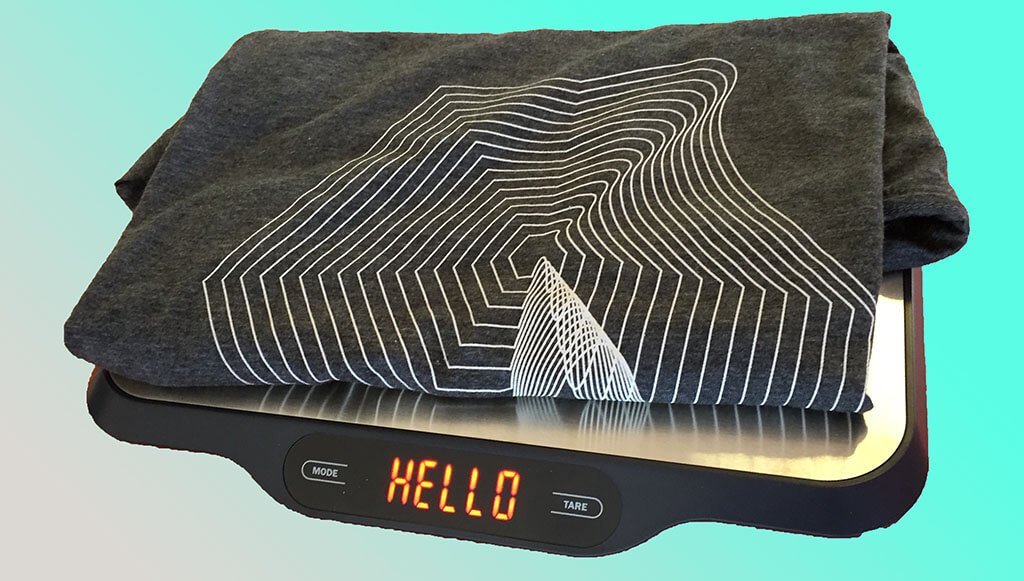You would wonder how and why the weight of a T-shirt should be of concern. If you are an online seller, you need to now much the T-shirt weighs so that the charges do not go overboard.
It even becomes more realistic when shipping to other countries because the small difference in weight can increase your shipping cost.

Why Does the Weight of a T-shirt Matter?
The type of fabric and its thickness also determines the weight of a T-shirt. With that in mind, the weight should be in the ranges of 1 to 2 kilograms. Ideally, the weight will usually depend on the material used in design, the size and the humidity collected by the shirt in a particular environment. (A dry and a wet shirt weigh differently).
To establish the different ranges of weight, it is important that we use the most popular brands and weigh them. Now that you already know, the ranges of weight within which a T-shirt should fall in, anything below 1 kilogram may not be as durable as it should be.
Pegging the durability of a T-shirt on its weight does not mean that the cloth is not good or has inferior quality. Such T-shirts are very much in demand in the summer weather or in events that run within days.
The weight of a T-shirt also helps in you determine the right clothing when going to a place where there is likely to be a lot of wear and tear. The best choices in such scenarios are the heavy and thick clothing. Most T-shirts fall within the ranges of 500 grams in weight.
T-shirts designed for promotional purposes should have enough weight or thickness to withstand the screen-printing process. Please note that the heavy and thick T-Shirts use high-quality fabric and consequently will cost you more.
The heavier T-shirts have higher shipping costs because it translates to the entire weight of packages used to move them from one country to another.
Also read: How much does Screen Printing Cost
Does the Printing Style Affect the T-Shirts Weight?
Screen-printing is a stencil creation coming from an artwork. The ink used is printed through the stencil on the shirt in layers. Every color you use in this type of printing increases weight to the artwork adding to the overall weight of the T-shirt.
Also, note that the number of screens increases when you different colors in the artwork. Screen printing ends up with thick designs and colors tend to stand out compared to digital printing.
Digital printing works almost in the same manner an inkjet printer operates. The T-shirt is placed directly onto the printer, and the ink is spread onto the fabric to create a design. Desktop printing does not show strength in colors even when strong colors are used.
Shipping
When it comes to packaging, one of the best ways of sending a few numbers of shirts is by using a plastic mailbag. They are waterproof and lightweight. Plastic bags also have the advantage of qualifying for the lowest cost of sending a parcel by post.



